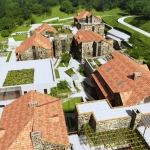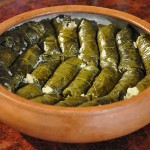
Karabakh carpets are rich with symbols that represent family crests and ancient legends some dating back to pagan times. For instance, eagle was the symbol of Aramazd, the supreme deity of the Armenian pantheon, later it became the symbol of powerful dynasties. There were types of medallions which have the suffix “berd” – fortress in their names: Jraberd (water fortress), Arevaberd (sun fortress) and Otsaberd (snake fortress). In Karabakh, as in other Armenian regions, carpets and rugs were not only intended for the market. They were considered household items, such as saddle bags, luggage carriers, bedding storage cases and etc. In fact, it was considered bad luck to take a carpet out of a home. Heirloom carpets had a protective significance and were often related to fertility.In spite of a number of massacres and continuous dislocation held by the early 20th century,
nowadays handmade carpets and rugs are woven not only in Stepanakert and Shushi, but also in surrounding villages, which fosters the economic and social development in the country.
Carpets of Artsakh
Back To Top










